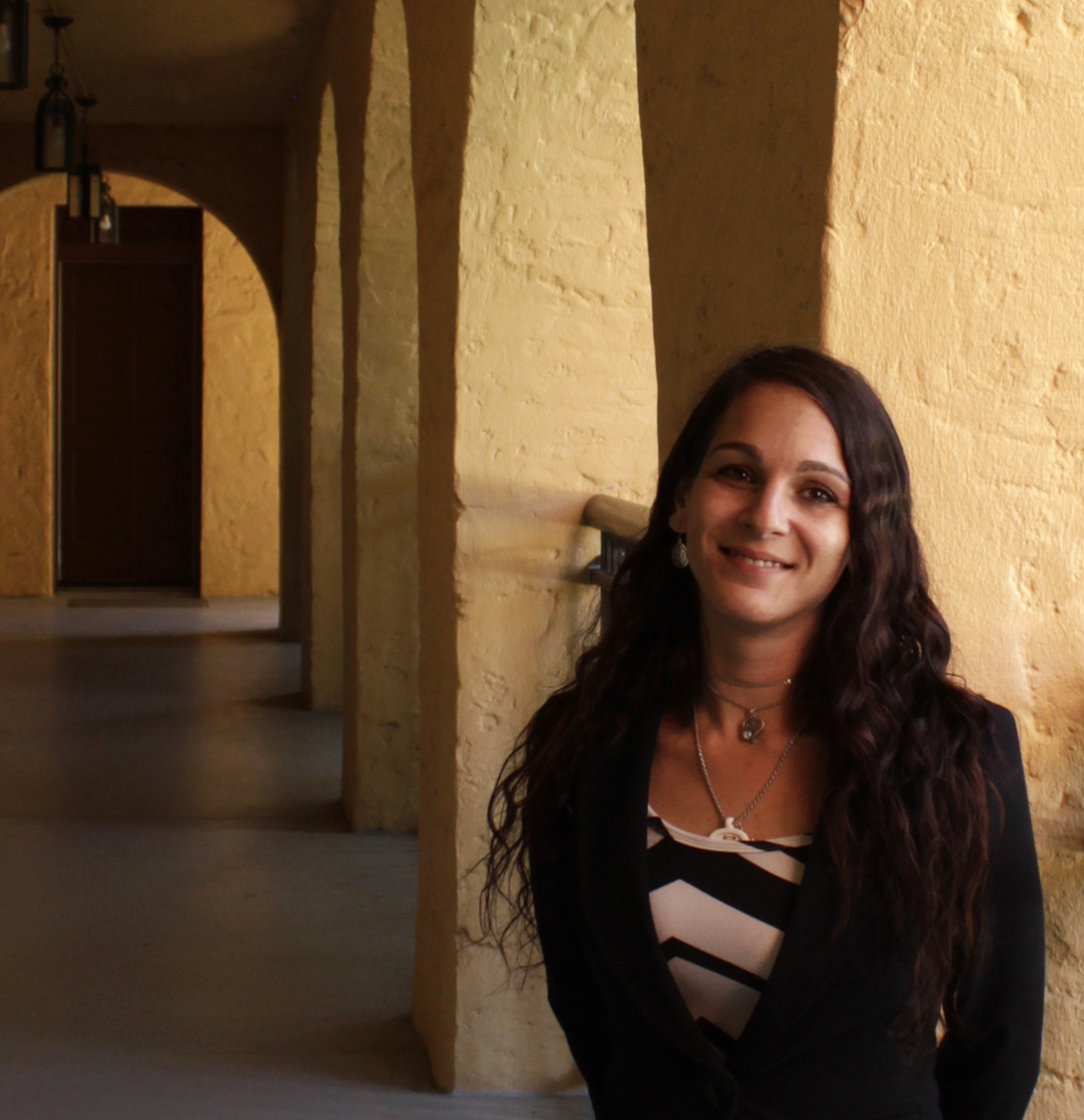Finding her voice: social justice advocate Kiera Forlenza wants to stand up for children
Student Kiera Forlenza is a social justice advocate focused on helping children.
Second-year law student Kiera Forlenza admits that she wasn’t sure law school was for her during her first year of studying the fundamentals, buried in books. Forlenza came to law school with the purpose of becoming an advocate for children. It was not until she delved into coursework in Stetson’s Social Justice Advocacy (SJA) Concentration Program under the mentorship of Professor Judith Scully that Forlenza began to define herself as an advocate in law school.
Today, Forlenza is student president of the Dream Defenders organization. The busy mother and law student is a Guardian ad Litem and volunteers as a classroom assistant in Sarasota, where she plans to work with the Public Defender’s Office this summer. Forlenza says that Stetson’s SJA concentration program transformed her opinion of law school.
“The program is trying to instill a different type of lawyering,” says Forlenza. “Students learn how to think outside the box to effect change.”
Stetson’s first full graduating class in the Social Justice Advocacy Concentration Program was in 2014. Professor Scully explains that the program appeals to any student interested in civil rights, human rights, criminal law, or any aspect of the law that needs to be reformed, embellished, or abolished in order to achieve equity and/or justice.
Forlenza is currently wrapping up the first semester of her second year at Stetson. She has already completed more than 200 pro bono hours. She says she is enrolled in SJA electives that are helping her hone her voice as an advocate.
Forlenza explains that the program is directing her passion for juvenile justice through careful course selection, independent study, colleagueship with other SJA students and mentoring.
“Juveniles are the most defenseless of our population,” says Forlenza. “They can easily get lost in the system.”
Many juveniles are transferred into the adult court system by prosecutors using their direct file powers. This prosecutorial power is currently being challenged by proposed legislation in Florida because in the past 6 years nearly 10,000 juveniles are transferred in to the adult criminal legal system, the highest number of juvenile transfers reported by any state. Florida is one of the only states that uses direct file as its primary tool of prosecuting juveniles as adults. If convicted as adults, juveniles are branded as felons for life which greatly impacts their ability to obtain employment, housing and even financial aid for higher education, says Forlenza.
Professor Scully describes how the Social Justice Advocacy and the Law course, offered for the first time at Stetson in the spring 2017 semester, helps students understand the wide variety of ways that they can use their legal skills to empower their clients and serve their communities. Through this course, students are introduced to different forms of lawyering other than the traditional “one client, one lawyer” model. In the SJA and the Law course, students learn how lawyers can work in tandem with policymakers; as rebellious lawyers who collaborate with their clients; and as holistic lawyers who work as a team with social workers, immigration lawyers, civil rights lawyers, housing and social security lawyers to ensure the success of their clients not just in their cases but in their lives. Some SJA lawyers also facilitate leadership of community members so that they can solve their own problems in the future. The semester ends with a focus on self-care so that students are prepared to manage the second-hand trauma that lawyers often face when dealing with people in extreme crisis.
“Students learn how to effectuate change not just in the courtroom but also in the community,” says Professor Scully, who introduces students to models of holistic lawyering being developed around the country by non-traditional lawyers with the National Conference of Black Lawyers and the National Lawyers Guild, lawyers working in nonprofit organizations and law school clinics, and with the public defender’s office in the Bronx, New York. A series of ten practicing attorneys joined the SJA and the Law course this semester through video Skyping, allowing students to hear a wide variety of SJA voices and perspectives.
“It is my hope that students will leave this course knowing that one lawyer empowering others can make fundamental change in the legal system and that a small group of determined lawyers working in the community can change the course of history “ says Scully.
She is proud of Stetson’s Social Justice Advocacy Concentration Program alumni who are working in immigration law, veterans law, juvenile law, with public defender offices and with policymakers in the legislature. “Our students are making an impact in Florida, New York, Texas and Georgia. A decade from now SJA alumni from Stetson will be leaders all across this nation.”
As an undergraduate, Forlenza says she focused on paralegal studies and wanted to work in the education field. Her goal evolved into a desire to create change in the education system. As a law student in the SJA program at Stetson, Forlenza says she still wants to make a difference in the lives of children as a social justice lawyer, and now she sees some different paths to that goal. She says that the program has helped her develop professionally, discovering where she personally wants to be and how to get there.
“Social justice advocates are not just litigators strictly working in courtrooms,” says Forlenza. “They are in the community doing all types of work that will legally empower and assist their clients in economically, politically, and socially developing their communities .”
She says her goal is to work in juvenile criminal defense, and to be an advocate with a holistic focus on her clients.
“Our job as future attorneys is to help our clients get what they need,” Forlenza says.
Post date: May 9, 2017
Media contact: Kate Bradshaw
[email protected] | 727-430-1580
